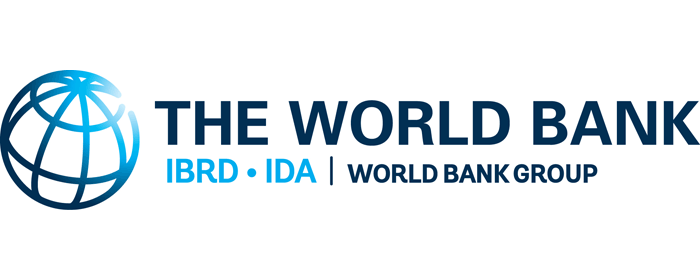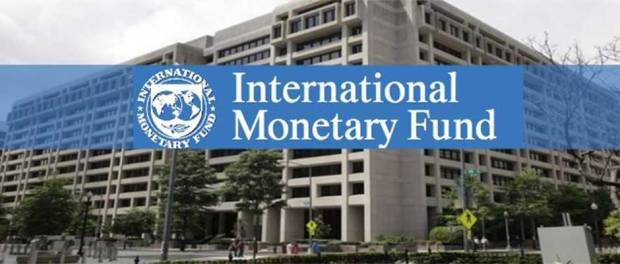The IMF and The World Bank: How Are They Different?
After the crises of the 30s that literally shocked the entire world and as a result of losses from the World War II, the world economy appeared unbalanced. Countries got involved in trade conflicts with each other and the financial, monetary and credit system fell into disrepair. Therefore, by the middle of the twentieth century, the understanding had gradually occurred that the world economy is not able to operate stably without any coordination and control that would be common for all countries. A whole system of international economic and financial organizations monitoring the global economic development, warning of any imbalances and assisting countries in case of need full support have appeared at the macro level throughout the decade. Global organizations operating in the field of economics and monetary relations naturally fall within the scope of influence of the United Nations.
In July 1944, the Bretton Woods Conference brought together representatives of 44 member countries of the newly formed United Nations. The end result of the Conference had been the establishment of two UN specialized organizations in December 1945: the IMF and the World Bank.
There is an indistinct notion of the World Bank, on the one hand, and the IMF - on the other, which often causes confusion because of some external similarities of these organizations. The World Bank and the IMF are legally independent organizations with different objectives.
Objectives of the IMF and the World Bank
The World Bank, the multilateral credit institution, consisting of five closely associated institutions whose common objective is to improve living standards in developing countries through financial assistance from developed countries. The first institution is the International Bank for reconstruction and development (IBRD). The main objectives of the IBRD are: to promote the reconstruction and development of the territories of the Member States, by promoting the investment for industrial purposes; encouraging private and foreign investment in addition to private investment; stimulating long-term sustainable growth and contributing to the maintenance of the balance of payments equilibrium. Its purpose is to provide loans to developing countries that are relatively wealthy.
Second - the International Development Association (IDA) that was founded in 1960. The main objectives of IDA are: to promote economic development, increase productivity, improve living standards in developing countries (members of the IDA). Third - the International Finance Corporation (IFC) that was founded in 1956, the objective of which is to promote economic growth in developing countries by supporting the private sector. Fourth - Multilateral Investment Guarantee Agency (MIGA). It was founded in 1988.
The purpose of MIGA is the encouraging of investment for production purposes in the Member States, especially in developing countries. Finally, the fifth - International Centre for Settlement of Investment Disputes (ICSID) that was founded in 1966. It contributes to an increase in international investment flows through the provision of arbitration and settlement of disputes between governments and foreign investors. Its objectives are counseling, research, provision of information regarding investment legislation.
The International Monetary Fund is an intergovernmental organization designed for promotion of monetary and credit relations between the Member States and providing them with financial assistance in case of currency difficulties caused by balance of payments deficit, by providing short and medium-term loans in foreign currency.
The Fund is a specialized agency of the United Nations and it is virtually the institutional foundation of the global monetary system. The IMF was established at the International Monetary and Financial Conference of the United Nations, held from July 1 to July 22, 1944, in Bretton Woods (United States, New Hampshire).1 The Conference adopted the Articles of Agreement regarding the IMF, which is its Charter and entered into force on 27 December 1945; the Fund began its practical activities on March 1, 1947.
Objectives of The International Monetary Fund:
- to promote the international monetary cooperation within the framework of the permanent establishment, which provides a mechanism for consultation and collaboration regarding international monetary problems;
- to facilitate the expansion and the balanced growth of international trade and to achieve and maintain high levels of employment and real income as well as the development of the productive resources of all Member States, considering this as a priority of economic policy;
- to promote currency stability, maintain an orderly currency regime among the Member States and avoid currency devaluations with the purpose of gaining an advantage in the competition;
- to assist in the establishment of a multilateral system of payments on the current operations among the Member States, as well as to eliminate currency restrictions hindering the growth of world trade;
The structure of the IMF and the World Bank
The highest body of the IBRD is the board of governors. The executive body of the IBRD is the board of directors. The board of directors makes the decisions regarding the policy of the Bank on which its activities are based and approves the granting of all loans. Five executive directors are appointed by the governments of five Member States that are major stakeholders of the Bank (United States, Japan, Germany, France and the United Kingdom).
The main operational unit is the development committee (Joint Ministerial Committee of the Boards of the World Bank and the International Monetary Fund concerning the transfer of real resources to developing countries).
Structure of the International Development Association (IDA): the governing council, the executive directorate, the president. IDA staff is divided into four sectors: operations, funding, policy, planning, and research.
Structure of the international financial Corporation (IFC): the governing council, the directorate, the president, the executive vice president, the banking advisory committee, the business advisory committee. The president of the Corporation is also the president of the World Bank. The executive vice president is responsible for the overall management and ongoing operations.
Structure of the Multilateral Investment Guarantee Agency (MIGA): the governing council, board of directors, chairman of the directorate, executive vice president. The highest body of the Agency is the board of governors. He may delegate his authority to the directorate, which consists of 20 directors (each of them have one alternate) and is responsible for the overall operations of the Agency.
The structure of the International Monetary Fund
Management of the IMF is carried out in accordance with the articles of the Agreement. The governance structure of the IMF consists of the governing council, the interim committee, the development committee, the executive board, manager, and personnel.
The governing council is the highest decision-making body of the IMF. Each Member State is represented here by the executive and his alternate that is appointed for five years. The interim committee executes the decisions of the executive board. It consists of 24 IMF governors, ministers or other officials of comparable rank. The development committee, as well as the temporary committee, is composed of 24 IMF governors, ministers or other officials of comparable rank. Its duty is to make recommendations and report to the board of governors of the IMF. The governing council delegates most of its authority powers to the executive board. The executive board is responsible for a wide range of administrative and operational problems as well as issues concerning policies of the Fund in respect of the Member States.
Main activities of the IMF and the World Bank
The activities of the World Bank
The Bank acts as a partner for emerging economies and growing markets in order to improve the quality of life of people. Unlike many other programs that are related to humanitarian and technical assistance, the Bank does not provide guarantors. All loans issued by the Bank are of a recurrent nature.
Developing countries borrow from the Bank because they have the need to attract financial resources, technical and organizational assistance. The World Bank is one of the sponsors of the Consultative Group on international agricultural research (CGIAR) that was established with the purpose of using modern science for the development of sustainable agriculture in poor countries. The regional bank's mission works in Africa, Asia, Europe and Latin America.
The activities of the International Monetary Fund
The IMF currently grants credits in foreign currency to the Member States for two purposes: first, to cover the balance of payments deficits, i.e. practical replenish of foreign currency reserves of the governmental financial institutions and central banks, and, secondly, to maintain the macroeconomic stabilization and economic restructuring, it means to finance budgetary expenditures of governments.
The country that requires the foreign currency buys or otherwise borrows the foreign currency in exchange for an equivalent amount of its own currency, which is credited to the IMF account in the Central Bank of the given country.
The IMF not only lends the money to the Member States directly but also helps them to obtain loans from the governments of industrialized countries, central banks, the World Bank Group as well as from private commercial banks. Even a small loan from the IMF eases the country access to the private capital lending market. By providing the loan, the IMF would certify the solvency of the country and would act as the guarantor. In contrast, the IMF's refusal to provide credit support closes the access to the capital market for any country.
The provision of loans to the Member States by the IMF is connected with the implementation of certain economic and political conditions. This special order of the credit provision was called the "conditionality" of loans. The IMF explains that practice as the need to assure that the countries, that receive loans, will be able to repay their debts, providing an uninterrupted cycle of Fund resources.
During its existence, the IMF has become a truly universal organization and has achieved recognition as the supranational body regulating international monetary and credit relations, an authoritative center of international lending, coordinator of international credit flows and guarantor of the solvency of the loan receiving countries. At the same time, it starts to play an important role in the implementation of the decisions by the Group of seven of the leading nations of the West, has become a key link in the emerging system of regulation of the world economy, international coordination, harmonization of national macroeconomic policies.
The World Bank and the IMF are legally independent organizations with different objectives. The International Monetary Fund (IMF) is an interstate institution that provides loans to countries, which develops the principles of functioning of the world monetary system, which carries an interstate management of international monetary and financial relations. The World Bank was created with the purpose to assist in the reconstruction and development of the economy of its Member States.
The IMF carries out loan operations only with official bodies, the ministries of finance, treasuries, stabilization funds and central banks. The World Bank borrows its resources on the financial markets of developed countries, and therefore its loans are also provided on market terms. The IMF not only lends the money to the Member States directly but also helps them to obtain loans from the governments of industrialized countries, central banks, the World Bank Group, the Bank for international settlements, as well as from private commercial banks. By providing the loan, the IMF would certify the solvency of the country and would act as the guarantor.


